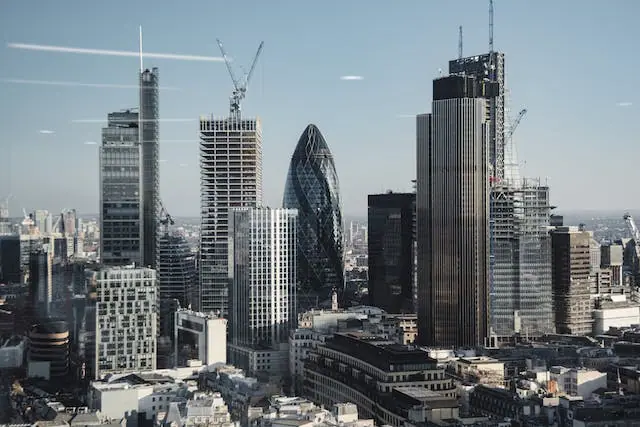
Engineering Excellence in Contemporary Building Facades
Contemporary architectural landscapes are characterized by a paradigm shift towards innovative, sustainable, and visually captivating building facades that transcend conventional design norms. This comprehensive blog post delves into the manifold facets of engineering excellence underpinning the evolution of contemporary building facades. Elucidating the fusion of structural ingenuity, material advancements, and aesthetic finesse that defines the architectural ethos of the 21st century.
Integrating Sustainable Materials and Technologies
The integration of sustainable materials, such as photovoltaic cladding systems, self-healing concrete, and translucent aerogel insulating panels. Epitomizes the vanguard of ecological conscientiousness and energy efficiency within contemporary facade engineering. Engineered to mitigate environmental impact, enhance thermal performance, and harness renewable energy sources, these avant-garde materials and technologies engender sustainable building envelopes. That harmonize architectural grandeur with environmental stewardship.
The Promontory of Innovation: Stone Veneer Applications
Stone veneer emerges as a promontory of innovation within facade technology, epitomizing the harmonization of natural aesthetics with modern engineering. Utilizing thin layers of genuine or manufactured stone, it provides architects with the flexibility to imbue a facade with the timeless elegance of stone. While circumventing the material’s traditional constraints of weight and installation complexity. This leap in veneer technology not only elevates design versatility but also underscores a commitment to durability. And maintenance efficiency, cementing its role as a cornerstone in the future of facade engineering.
Embracing Parametric Design Principles
Parametric design principles have emerged as a pivotal catalyst for fostering architectural innovation. This enabling the conception of dynamic, adaptable, and intricately patterned facades that respond to environmental variables and functional requisites. By leveraging parametric modeling software and computational design algorithms, architects and engineers actualize bespoke facade geometries, optimized solar orientations, and fluid formal expressions that resonate with the dynamism of modernity.
Harnessing Digital Fabrication Techniques
The proliferation of digital fabrication techniques, encompassing robotic assembly, 3D printing, and CNC machining. This has revolutionized the construction of complex, geometrically intricate facade components, transcending the constraints of traditional manufacturing methodologies. From bespoke cladding modules to intricate louver assemblies, digital fabrication empowers architects to materialize avant-garde design concepts, intricate detailing, and geometric complexity previously unattainable through conventional fabrication modalities. Through the union of digital design, innovation in materiality, and efficiency in fabrication, contemporary building facades break new ground while upholding architectural integrity.
The Triumvirate: Structural Ingenuity, Material Advancements & Aesthetic Finesse
As evident through the discourse above, engineering excellence in contemporary building facades is predicated on the marriage of structural ingenuity, material advancements, and aesthetic finesse. By fusing advanced sustainable materials, innovative design principles, and cutting-edge fabrication techniques with an unerring attention to detail. And meticulous engineering standards, architects are shaping the architectural landscape of tomorrow that is both timeless in expression and mindful of its environmental impact. Explore this fascinating subject further by reading our other blog posts on contemporary architecture trends and innovations.
Advancing Adaptive Facade Systems
The ascendancy of adaptive facade systems, characterized by dynamic shading devices, variable transparency glazing. And responsive ventilation strategies, heralds a new era of user-centric, environmentally responsive building envelopes. By seamlessly modulating solar heat gain, optimizing daylight penetration, and modulating interior comfort parameters, adaptive facade systems exemplify the confluence of user well-being, energy conservation, and architectural dynamism within contemporary building facades.
Optimizing Performance through Building Information Modeling (BIM)
Building Information Modeling (BIM) platforms serve as a linchpin for streamlining collaborative design processes, facilitating performance optimization. And expediting constructability analyses within the realm of facade engineering. Through the amalgamation of parametric modeling, energy simulations, and constructability assessments, BIM engenders a holistic framework for iteratively refining facade geometries, material selections, and performance attributes to realize superlative architectural outcomes.
Read More: Reasons To Delve Deep Into the World of Cloud Engineering
Enabling Biophilic Design Integration
The integration of biophilic design tenets within contemporary building facades engenders a symbiotic interplay. Between nature, occupant well-being, and architectural aesthetics. This cultivating a sensorial connection to the natural environment within urban edifices. By infusing facades with verdant vertical gardens, biomimetic patterning, and daylight harvesting strategies, biophilic design fosters an immersive, restorative built environment. That resonates with human physiology and psychological well-being.
Conclusion
Engineering excellence in contemporary building facades is emblematic of a paradigmatic evolution towards sustainable, responsive, and visually resonant architectural expressions. From sustainable material innovations and parametric design principles to digital fabrication techniques. Also, adaptive facade systems, the confluence of interdisciplinary design acumen, technological acuity, and environmental conscientiousness propels the realization of iconic building envelopes. That epitomize the ethos of the 21st-century architectural milieu.


